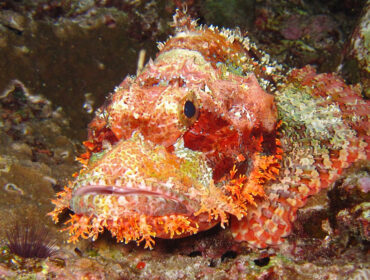Just in time for Halloween, we bring you a closer look at one of the most horrific aquatic creatures around: the lamprey. If you’ve ever seen a photograph of a lamprey, chances are you understand why it has earned the nickname “vampire fish.”
These ancient eel-like fish have no jaws, but instead have a round, heavily toothed, sucker-like mouth which they use to attach to other fish and small invertebrates to drink their blood.
More than 40 species exist, although only 18 of those are actually parasitic. Fortunately for you, attacks on humans are few and far between.
Lampreys have been around for over 300 million years. They are typically 12-20 inches long, dark brown in color, have red eyes, and their internal skeleton is made entirely of cartilage which makes fossil finds very rare. They possess seven distinctly round gill openings behind the eyes, as well as a “nostril” above the head, resulting in the folklore name “nine-eyed eels.” They are slimy to the touch as their skin is absent of scales.
Some species are anadromous, while others spend their entire lives in fresh water. Once hatched, they can spend up to seven years in a larval stage buried in sediment and filter feeding. When adulthood is reached, it may be two years before they mate, and they die soon afterwards.
Lampreys are found in an amphitropical distribution pattern in temperate fresh and coastal waters, although there are a few species that travel far into the ocean. Freshwater lampreys are native to North America, but the sea lamprey began invading these waters around 1835. Manmade canals have allowed their distribution into the Great Lakes and surrounding rivers, and their invasion has drastically affected the ecosystem.
More than 22,000 are currently estimated to live in each river around the Great Lakes, each eating over 40 pounds of fish during their lifetime. As a result, the native fish populations have been unable to keep up with the increase in predatory demands. The Great Lakes Fishery Commission and the U.S. Fish & Wildlife Service have since successfully implemented a program to control this invasive species. Worldwide, the greatest threats to lamprey species are water pollution, dams and construction projects, and overfishing.
Take a look at this video demonstrating the devastation wreaked on native fish species in the Great Lakes region by these vampires of the deep.




